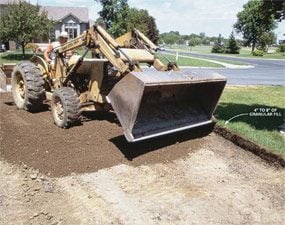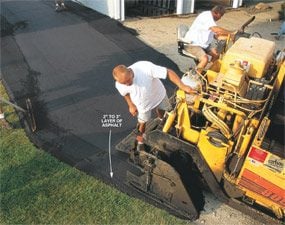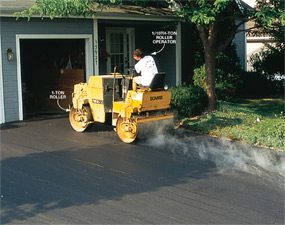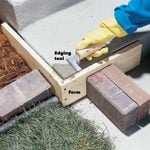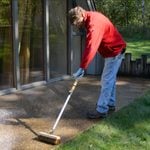How to Install a Durable Asphalt Driveway
Updated: Jun. 24, 2019Learn how the pros make asphalt driveways that last
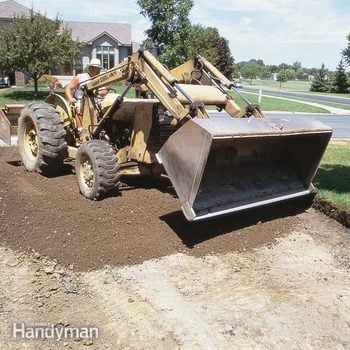
What makes an asphalt driveway durable?
The first step is finding a reputable contractor to do the job. The residential asphalt industry has more than its share of fly-by-nights. The only advice I can offer is to find one with references from homeowners who are still satisfied with their driveways after a decade or so. Assuming you find a good contractor, the rest should take care of itself.
The materials and techniques described here for a quality driveway are pretty simple. Discuss them with your potential contractor before signing on the dotted line, and then stay home to keep an eye on the actual installation to make sure you’re getting what you paid for.
The secrets of a long-lasting driveway
One of the main design objectives for a durable asphalt driveway is to provide enough slope for draining water off and away from the driveway. Water should never pond on the surface or next to the driveway where it will seep underneath to weaken the soil or cause frost heaving.
The main component of a long-lasting driveway is the underlying granular base. It must have the right thickness and composition. Base materials vary by region and can be crushed stone or “conbit” (recycled concrete and asphalt—it’s crushed and reused). Crushed coarse materials like these have jagged surfaces so they’ll compact and lock together in a tough, settle-resistant matrix. A binder like cement dust may be added to hold it all together. Coarse materials also drain water from under the driveway so ice won’t form and crack the asphalt surface.
Once your old driveway has been torn out, you and the contractor should closely examine the existing base (the fill under the asphalt surface) and possibly remove or add material. Digging into the exposed base will tell you its type and thickness. Recommended thicknesses are 8 in. of base over clay soils or 4 in. over well-drained sandy soils. If your base is inadequate, it must be upgraded. Low bids may signal that a contractor isn’t prepared to install a good base. Ask the contractor about these details before you sign up.
Mechanical compaction of the base, subbase and asphalt is crucial for a long-lasting driveway. Ideally, the base should sit for about a week so that natural settling will augment the mechanical compaction. When compacting subbases, contractors will use heavy rollers (or even the tires of the earth-moving equipment) for large areas and plate compactors for smaller areas. But when rolling out asphalt, heavy compacting equipment is needed. Select a contractor who has 1- to 3-ton rollers for compacting the asphalt itself. Edges are raked and formed to 45-degree angles, then packed with a hand tamper.
In most areas of the country, there are two options for the asphalt itself. The difference is the size of the aggregate (gravel filler) used. The most common mix for residential driveways has finer (1/2 in. or smaller) aggregate and thus forms a smoother surface. Coarser (3/4 in. or smaller) aggregate mixes are stronger but have a rougher finish. Parking lots and roads are usually a coarser mix. Coarser mixes are also recommended for driveways that get heavier traffic such as RVs, large trucks and tractors. Both mixes cost about the same.
In most parts of the country, the asphalt laid over a properly prepared aggregate base should be 2 to 3 in. thick. If you opt for a 3-in. thick surface, you can use the coarse asphalt mix for a 2-in. thick bottom layer for strength, and a 1-in. thick layer of the finer mix on the surface for a better appearance.
Required Materials for this asphalt driveway paving project
Avoid last-minute shopping trips by having all your materials ready ahead of time. Here’s a list.
- Aggregate base
- Asphalt
